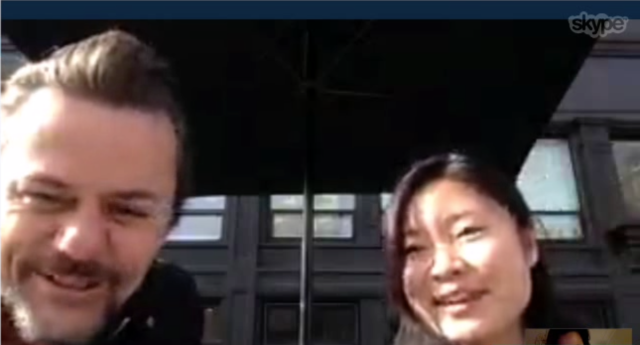Changing human behavior by light
In conversation with Wendy Di Wang and Markus Diebel
Markus, what was the thing that most sparked your interest when you first looked at Wendy Di Wang’s project?
When I looked at her proposal, the simplicity of her idea caught my attention. It was strikingly easy, in a way that anybody could understand: Changing human behavior by light and reducing crime in cities by implementing a lighting system that reacts to the movement of pedestrians.
What convinced you to choose her in the end?
In my profession, you have to recognize a good idea and then realize it into a successful product. Wendy’s idea had a very big realistic potential. Even in the very beginning, when I looked at her proposal, I saw a lot of potential in her idea. She was willing to go with me on the trip and take her idea to the next level.
How did you both work together?
In the process, we started to think about light not just as what brings brightness to dark streets, but also about light as a sensor, as an antenna. In this sense, the product does not only generate light, but also “feels” the city. The sensor collects data on the amount of people passing by and everything else around it such as noise, weather, pollution or traffic. The summary of that data can be used to recognize and improve the conditions in the areas where the lamps are installed. You can also communicate through those lamps. This data can be sent to organizations and used to better understand the needs of the city.
This week, the prototype is being produced. I cannot wait to see her presentation in February at the Haus der Kulturen der Welt, it will be great. Wendy is planning to start her own company with the project. There is even a city in China which is interested in implementing her lighting system.
Talking about the relationship between Wendy and me, I would say that she inspired me with her convincing idea. In return, I am able to share my knowledge and experience with her when it comes to material implementation, design language and prototyping.
How has the process progressed between both of you since last autumn?
Our process is that we meet mostly every weekend, every Sunday in the same café. And Wendy is updating me with her files, her database, her design and sketches. We talk about models, we talk about the actual prototype and about the installation at the Haus der Kulturen der Welt. That usually takes one to two hours and then Wendy goes away and does her things and we meet again the next weekend and exchange thoughts and sketch a little bit.
(Addressing Wendy) Is there anything that is different than in school, or is there anything new you learned while we were working together?
Wendy: Oh, it is a lot different from school. In school, most of the teachers are very into strategy, and then there are other teachers who are very into details. But now, with Markus, I balance everything from the strategy to the details. I think Markus is really a great mentor because he teaches me to do so.
(Looking at Markus) So I really wish we could continue like that forever because I enjoy working with you so much.
Markus: Thank you! (both laughing)
Here you can find more Information about Wendy’s Project Solux.
